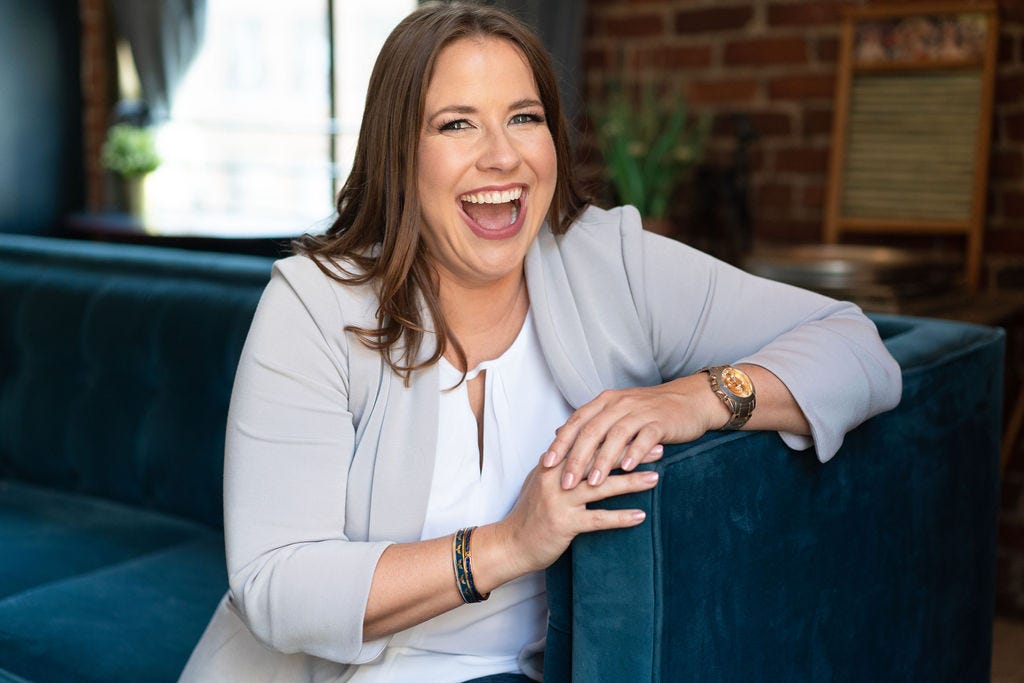**UPDATE, added 11/7/22**: Scroll all the way down for a link to EVERY one of the recap articles in this series.
Earlier today, we had another phenomenal conversation about strategic planning! This session, we welcomed Tiffany Oda, the Director of Community Operations at Venafi, to discuss Roadmapping. Scroll down for the recap of the conversation.
In addition to her role at Venafi, Tiffany is also a Strategic Community Advisor at Talkbase and the Co-Founder & Co-Leader of Community OPServations. Her website, The CommOps Gal, is also a valuable resource for any community professional.
Jenny: Tiffany, to get us started…what’s YOUR definition of Roadmapping?
Tiffany: Let’s start with what a Roadmap is. A roadmap is a visual tool that shows the initiatives and things that your team is working on, at a high level, to help achieve your goals and manage your time. It helps you and your team be able to plan out these initiatives over time, making sure your initiatives are appropriately spaced out, not conflicting with one another or even other wider company initiatives, and it also helps to visualize that what you are working on and spending your time on is aligned with the strategic goals and directions of the wider organization. It’s also a great resource to proactively share cross-functionally to let other teams know what your team is working on and when, adding another layer or visibility and collaboration.
Now Roadmapping, I would say, is the process to get to the roadmap. The roadmap is something that should take a lot of preparation and thinking to make; you can’t just sit there by yourself and pop out a roadmap. There are a number of steps that you should take before and during the process of making the roadmap to really help ensure its success. And this process of roadmapping is something I absolutely love to do, it’s so much fun, and I’m excited to dive into it a bit deeper with you today.
Jenny: Where does Roadmapping best fit into the process of strategic planning?
Tiffany: I think roadmapping and strategic planning go hand in hand. The roadmap is a tool to help organize the strategic planning. As part of your strategic planning, you look at your company’s business goals, and you obviously want the community to align with those goals. You then think about your strategy and plan (aka your strategic plan) to work towards and attain those goals and what needs to be done in order to get there. You also obviously have your own strategic community goals, things that you as the leader of the community want to achieve over the course of the next year, and that’s what the roadmap helps to organize and facilitate while making sure they are also still in line and that you actually have the bandwidth and capacity to get it all done.
So for example, let’s say you know one of your company goals is to expand their European footprint - get more prospects, customers, events, etc. in Europe. From a community leadership standpoint then, maybe you make one of your goals to increase the number of European community members by 80%. What are the things you are going to do to get there? Maybe do an event series in European hours. Maybe start European chapters for user groups. Maybe work on better site translations for the community. What is your strategy and plan to achieve the goal? When do you do those things? Who is doing those things? All that is organized in the roadmap.
Jenny: What needs to be done FIRST when it comes to Roadmapping?
Tiffany: Roadmapping is a journey. I think there are actually several steps to take in the process of creating your roadmap and then maintaining it. I could talk about this for a long time so I will try to keep it short and sweet.
First, the leader of the community team figures out the company goals, how community initiatives will align and work towards those goals, and also note down other things like - when company initiatives and events are going on that community needs to support and spend time on. Community is so cross-functional. We work with so many teams and do so many things, and each of those things takes bandwidth from the team in some capacity, so keeping those things in mind while making the roadmap is very important.
Each team member should also do some pre-work and figure out what their year looks like. Do they have recurring programs or initiatives that they run? What do they work on that take their time, and when does each thing occur? What do they maybe want to work on but never had the time to? They should have like a v1 of their own roadmaps.
Then the team should do a Roadmap offsite. Get together, IRL if possible, and build the roadmap together, taking all of the pieces that each individual worked on and putting them together. Talk about things like when initiatives are happening, relative to one another, how much effort it’s going to take the team, what other things are going on at the same time, who is working on what and when, and map things out. Then double check to see if everything on that roadmap aligns with the business goals of the company and the community, and also if your team can support everything that’s going on and if the plan is realistic, then tweak as necessary. After that, you should have a pretty solid roadmap that you can start using.
Jenny: What are the most critical elements of a Roadmap?
Tiffany: From the actual “physical” roadmap perspective, the most critical elements are the initiative and the start and end date. You can easily build a roadmap with just that. Then you can dive into additional details like the capacity planning and effort and stuff like that, but you absolutely need at the minimum the initiative and the date/duration.
From the more “metaphorical” perspective of most critical elements of a roadmap, the roadmap needs to be: (1) Shared and editable by every team member; (2) Easy to edit; (3) Easy to read. Shouldn’t be super complicated to understand.
Jenny: How do you know when your Roadmap is complete?
Tiffany: A roadmap is never complete! After your roadmap offsite that you do with the team, yes, that’s technically a completed roadmap. But the roadmap is always evolving. You will always have curveballs thrown at you. Maybe new initiatives are added, or an event or conference changes dates, or a project is taking way more bandwidth for the team than originally planned… or (maybe it’s too soon to say this) maybe a global pandemic happens and you need to shift gears and re-plan completely. Or maybe it’s something good, like you get headcount and a new team member joins. The roadmap is not by any means set in stone. You should be constantly updating and maintaining it throughout the year to be the source of truth of what your team’s priorities are.
Jenny: What’s something people should “watch out for” when it comes to Roadmapping? Like…“beware of this…”
Tiffany: I’ve seen this happen a lot, where people start actually project planning in the roadmap. For example, they put an initiative in the roadmap, like… Host product roadmap series. Then they start adding rows like - Reach out to product managers, or send event invitations out. They start solutioning and working on that initiative, and that is not what the roadmap is for. The roadmap should stick to those high-level strategic planning items and not be a project plan for the individual line items.
Another “watch out for,” and this is something I have caught myself doing too, is making the roadmap too complex. I was working on a roadmap last year and added so many columns with so many variables and fields that it got incredibly clunky. I had to then assess to see what value those columns actually bring, and I wound up taking out a bunch and simplifying it.
Jenny: What resources/people do you recommend for someone who still wants more advice/info on Roadmapping?
Tiffany: Yessss - so a few things here. (1) I have a blog and have a few posts on roadmapping, there are a few in the queue that I still need to write, but my blog is medium.com/@tiffeoda; (2) I have a course on Community Club’s CSchool on Community Operations and there is an entire unit on Roadmapping; (3) I still have to confirm with my co-founder about this, but I think our December Community OPServations meeting is going to be a workshop session on roadmapping. Community OPServations is a community for people in commops, we meet monthly and talk about all things community operations.
Special shoutout and thanks to Jeremie Gluckman for joining the Q&A. Jeremie said that he sits within the Customer Service team but is tasked with creating internal relationships within the company to benefit community. He asked for advice on how to go about doing so, and Tiffany said she does this in the form of a “company tour” to talk to team leaders about Community. I’ve also heard it referred to as a “roadshow,” and I’ve got this free resource template to guide you through one.
Thanks so much to Tiffany for being the special guest! If you want to know more about her work, you can connect with her on LinkedIn.
We’ve got part 5 (The Finale!) coming up on Monday, 10/31 with Ilker Akansel. Mark your calendar for 11-11:30am Pacific next Monday!
**Heads up: LinkedIn does NOT provide a recording of audio events, so make sure you don’t miss this conversation!**
Need hands-on help with your community strategy for 2023?
Let’s chat! Contact me.
Series Recaps
Session #1 Recap: The Planning Before The Planning, with Steph Bennett
Session #2 Recap: Setting Goals & How They’ll Be Measured, with Todd Nilson
Session #3 Recap: How to Plan for Programming, with Ashleigh Brookshaw
Session #5 Recap: The Strategic Plan & Roadmap are Done! Now What? With Ilker Akansel





Another great show, Jenny! Great insights from Tiffany here!